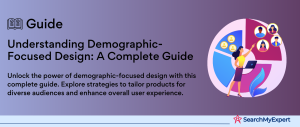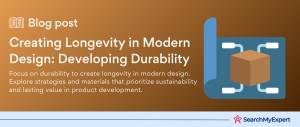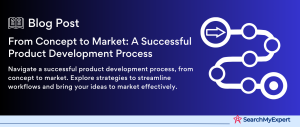Emotional Design: The Heartbeat of User Experience
Captivating the User’s Heart: How Emotions Shape Product Engagement
Imagine you’re using an app that not only meets your functional needs but also brings a smile to your face, soothes your stress, or piques your curiosity. This isn’t just a happy coincidence; it’s the power of emotional design at work. Studies reveal that products evoking positive emotions are not only more enjoyable but also lead to higher user engagement and loyalty.
Defining Emotional Design: More Than Just a Pretty Interface
Emotional design is the art and science of creating products that resonate with users on an emotional level. It transcends mere aesthetics or functionality; it’s about understanding and catering to the human side of the user experience. This approach focuses on eliciting specific feelings such as joy, surprise, or even nostalgia, thereby forging a deeper connection between the user and the product.
Why Emotional Design is a Game-Changer
Integrating emotional design into products is not just about making them look good; it’s about making them feel right. Products with an emotional edge often see:
- Increased User Engagement:
Users are more likely to interact with and return to a product that evokes positive emotions. - Enhanced Brand Loyalty:
Emotional connections can transform casual users into loyal brand advocates. - Higher Satisfaction and Conversion Rates:
Products that delight users tend to drive more conversions and positive reviews.
Understanding Human Emotions in Product Design
The Spectrum of Emotions in Design: From Joy to Frustration
In product design, acknowledging the full spectrum of human emotions is crucial. Positive emotions like joy, excitement, and satisfaction are often the targets, but negative emotions like frustration, disappointment, and confusion are equally important to understand. A product designed with only positive emotions in mind may fail to address critical pain points, leading to negative user experiences.
The Psychology Behind User Interaction
Every design element, from color to layout, typography to imagery, can evoke specific emotions. This interplay is rooted in various psychological principles:
- Visual Perception:
Colors and shapes can induce different emotional responses. For instance, warm colors often evoke feelings of warmth and comfort, while sharp angles might convey dynamism or tension. - Cognitive Psychology:
The ease with which information is processed (cognitive load) impacts the user’s emotional state. A cluttered interface can lead to frustration, whereas a clean, intuitive design can promote satisfaction. - Neuroscience: Emotional responses are linked to neurological activity. Designs that trigger positive emotional reactions can lead to better memory retention and more positive associations with the product.
The Role of User Research & Empathy
Understanding and empathizing with users is paramount. Techniques to gauge emotional responses include:
- Surveys and Interviews:
Directly ask users about their emotional experiences with the product. - Emotional Mapping: Track and analyze the emotional journey of users through different stages of interacting with the product.
- Observational Studies:
Watching users interact with a product can reveal unspoken emotional reactions.
By integrating these insights into the design process, products can be more finely tuned to the emotional needs and preferences of the user.
Designing for Positive Emotions in User Experience
Cultivating Joy and Delight through Design
To infuse joy and delight in user experience, designers can employ various strategies:
- Playful Interactions: Integrating elements of play, like animations or gamified experiences, can turn routine interactions into delightful moments.
- Surprise Elements:
Unexpected positive features, such as a congratulatory message for completing a task, can create moments of joy. - Storytelling: Crafting a narrative within the product experience can engage users emotionally, making the experience memorable and enjoyable.
Enhancing Motivation and Confidence
Design can significantly impact a user’s sense of empowerment and achievement:
- Intuitive Workflows: Streamlining user tasks to reduce complexity boosts confidence and satisfaction.
- Progress Indicators: Visible indicators of progress, such as completion bars or achievement badges, give users a sense of accomplishment and encourage continued engagement.
Fostering Belonging and Connection
Products that create a sense of community and personal connection can enhance user experience:
- Social Features: Incorporating social elements, like sharing achievements or collaborating with others, can foster a sense of belonging.
- Personalization: Tailoring experiences to individual preferences makes users feel understood and valued.
- Shared Experiences:
Features that allow users to engage with others, share content, or participate in community challenges can strengthen the sense of connection.
Incorporating these elements thoughtfully can transform a mundane interaction into an emotionally enriching experience, deepening user engagement and loyalty.
Addressing Negative Emotions in Product Design
Minimizing Frustration and Confusion
To reduce negative emotions like frustration and confusion, designers should focus on:
- Clear Instructions: Providing straightforward guidance can help users understand how to use the product effectively.
- Consistent UI Elements: Maintaining consistency in design elements, such as buttons and menus, aids in intuitive navigation.
- Error Handling:
Graceful handling of errors, with helpful feedback and easy recovery options, prevents user irritation.
Reducing Anxiety and Stress
Designs that promote calmness and predictability can significantly alleviate user anxiety:
- Calming Aesthetics: Using soothing colors and imagery can create a relaxing user experience.
- Predictable Behaviors:
Ensuring the product behaves in a consistent manner builds user trust and reduces anxiety. - Transparency: Being clear about how user data is used and providing control options can reduce concerns about privacy and security.
Building Resilience and Acceptance
Helping users effectively handle negative emotions involves:
- Feedback Mechanisms:
Allowing users to express their concerns or difficulties through feedback can help designers make necessary improvements. - Support Features:
Offering easy-to-access support, such as FAQs or chatbots, provides users with help when they encounter issues. - Guided Learning:
Incorporating tutorials or guided steps can help users overcome challenges and learn how to use the product more effectively.
Thoughtful design strategies that address these negative emotions can transform a potentially frustrating experience into a more positive and productive one.
Real-World Impact: Case Studies in Emotional Design
Illustrating Concepts with Successful Examples
Let’s delve into some notable instances where emotional design has played a pivotal role:
- Mobile Gaming Apps:
Many mobile games successfully leverage emotional design by providing immediate rewards, vibrant visuals, and engaging storytelling. These elements create an addictive and enjoyable user experience, leading to high user retention rates. - Social Media Platforms:
Platforms like Instagram and Twitter use emotional design by fostering a sense of community and belonging. Personalized feeds, interactive features, and visually appealing interfaces contribute to an emotionally engaging experience. - E-commerce Websites: Sites like Amazon effectively use emotional design to create a sense of trust and security. User-friendly interfaces, personalized recommendations, and clear navigation paths enhance the shopping experience.
Analyzing Success Factors
In each case study, specific design elements stand out:
- Mobile Gaming Apps: The use of vibrant colors, playful animations, and rewarding feedback loops evoke joy and excitement.
- Social Media Platforms:
The design elements promoting social interaction and personalization create feelings of connection and belonging. - E-commerce Websites:
The straightforward and intuitive design reduces anxiety and builds trust, leading to higher conversion rates.
Provoking Ethical Discussion
While emotional design can significantly enhance user experience, it raises critical ethical questions:
- Manipulation Concerns: How do we ensure emotional design is not used to manipulate user behavior in harmful ways?
- Privacy and Data Usage: What are the ethical implications of using user data to create emotionally resonant experiences?
- Balancing Business and User Interests: How can designers balance business objectives with the genuine emotional well-being of users?
Tools and Techniques for Effective Emotional Design
Emotional Design Frameworks: Measuring the Immeasurable
To accurately gauge and implement emotional design, several tools and frameworks are essential:
- User Research Tools: Surveys, interviews, and usability tests focused on emotional responses provide invaluable insights.
- Empathy Maps and Personas: These tools help designers understand and map out the emotional journey of their target users.
- Affective Computing: Technologies like facial expression analysis and biometric sensors can measure emotional responses to a product.
The Crucial Role of Prototyping and Testing
Iterative prototyping and testing are the cornerstones of refining emotional design:
- Rapid Prototyping:
Creating quick and iterative prototypes allows for early and frequent testing of emotional responses. - User Testing Sessions: Observing real users interact with these prototypes can reveal emotional reactions and areas for improvement.
- A/B Testing:
Comparing different design versions helps in determining which elements resonate most with users.
The Power of Collaboration
Successful emotional design is often the result of a multidisciplinary approach:
- Cross-disciplinary Teams:
Combining the skills of designers, engineers, and psychologists leads to more holistic and effective emotional designs. - Partnering with Experts: Collaborations with experts in fields like cognitive psychology and neuroscience can deepen the understanding of emotional responses.
- Stakeholder Involvement: Engaging with all stakeholders, including users, throughout the design process ensures that the product meets emotional as well as functional needs.
Utilizing these tools and techniques enables designers to create products that not only meet functional requirements but also resonate emotionally with users.
Embracing the Future of Emotional Design
Recap: The Essence and Impact of Emotional Design
Emotional design is not just a trend; it’s a fundamental aspect of creating compelling user experiences. By acknowledging and strategically influencing users’ emotions, products can achieve greater engagement, loyalty, and success. The key takeaways include the importance of understanding the full spectrum of human emotions, the need for empathetic and user-centric design approaches, and the power of positive and negative emotional experiences in shaping user behavior.
Emerging Trends: The Cutting Edge of Emotional Design
Looking ahead, the field of emotional design is poised for exciting innovations:
- Brain-Computer Interfaces (BCI):
These technologies offer new ways to directly understand and respond to user emotions, paving the way for more intuitive and empathetic user experiences. - Personalized AI Interactions:
AI-driven personalization can adapt to individual emotional responses, creating more relevant and emotionally resonant experiences. - Virtual and Augmented Reality:
These immersive technologies can evoke powerful emotional responses by creating more lifelike and engaging experiences.
Call to Action: A New Era of Design Thinking
As we venture into the future, the call to action for designers and product developers is clear:
- Integrate Emotional Design Principles:
Make emotional design a core aspect of the creative process. - Prioritize User Emotions: Always consider how your design choices will impact the user’s emotional experience.
- Embrace Innovation and Collaboration:
Stay open to emerging technologies and collaborate across disciplines to push the boundaries of what emotional design can achieve.
Conclusion
Emotional design is more than a methodology; it’s a mindset that values the emotional connection between users and products. By embracing this approach, designers and developers can create experiences that are not only functionally effective but also emotionally enriching.
Transform your ideas into reality with Product Design Firms.
Table of Contents
Toggle






